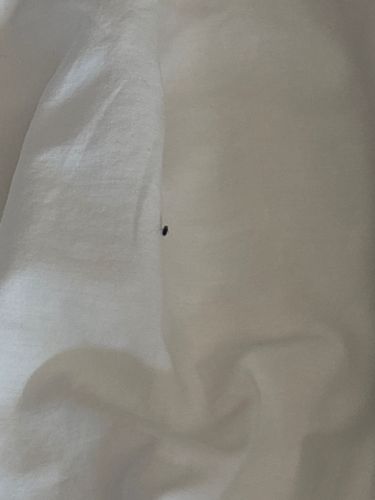Flea (possibly human flea or cat flea)
Scientific Name: Pulex irritans (human flea) or Ctenocephalides felis (cat flea)
Order & Family: Siphonaptera, Pulicidae
Size: Typically 1.5 to 3.3 mm (0.06 to 0.13 inches) long.

Natural Habitat
Fleas thrive in warm, humid environments. They are commonly found on host animals (mammals and birds) and in their bedding, carpets, cracks in floors, and furniture within homes. The specific image of it on fabric suggests an indoor environment.
Diet & Feeding
Adult fleas are obligate hematophagous parasites, meaning they feed exclusively on the blood of their animal hosts. Larvae feed on organic debris, including adult flea feces (which contain digested blood).
Behavior Patterns
Fleas are wingless insects known for their exceptional jumping abilities, which they use to move between hosts. They are highly resilient and can survive for significant periods without a blood meal. Their life cycle consists of four stages: egg, larva, pupa, and adult. The pupal stage can be very resistant to insecticides and can lie dormant for months, emerging when stimulated by warmth, vibrations, or carbon dioxide (indicating a potential host nearby). They are often nocturnal feeders.
Risks & Benefits
Risks: Fleas are a nuisance to humans and pets, causing itchy bites, skin irritation, and allergic reactions (flea allergy dermatitis). They can also transmit diseases, such as murine typhus and plague (though less common in modern times), and tapeworms (Dipylidium caninum) to pets and occasionally humans. Benefits: None for humans; in ecological terms, they serve as a food source for some predators and contribute to natural selection by targeting weaker hosts, but their negative impacts far outweigh any perceived benefits.
Identified on: 10/3/2025